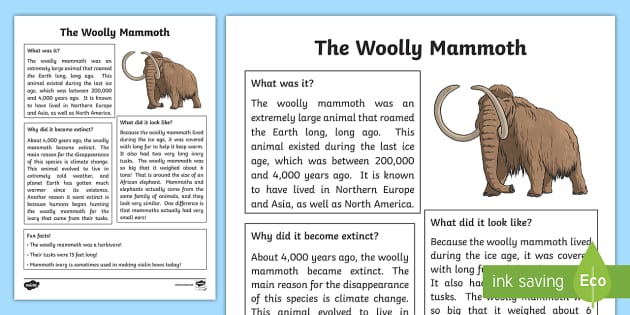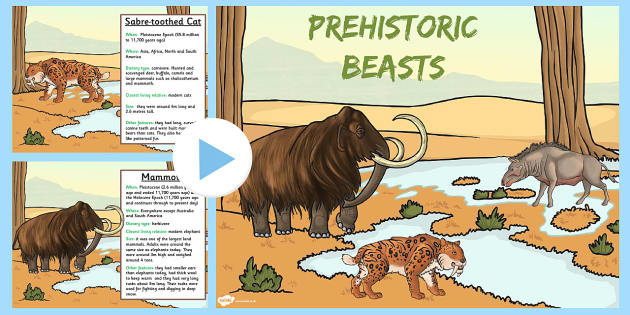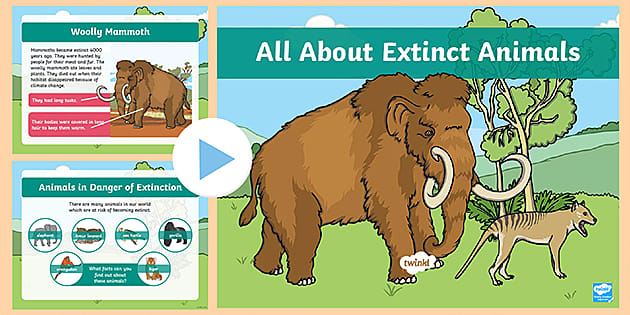

The woolly mammoth is a species of mammoth that lived during the Pleistocene. They were herbivores.
They are extinct relatives of today's elephant and were about the same size as an African elephant, though their ears were smaller. They were also covered in thick, brown fur to keep them warm in the cold Arctic. Even their ears had fur!
They had very long tusks (around 15 feet long) which they used for fighting and digging deep snow.
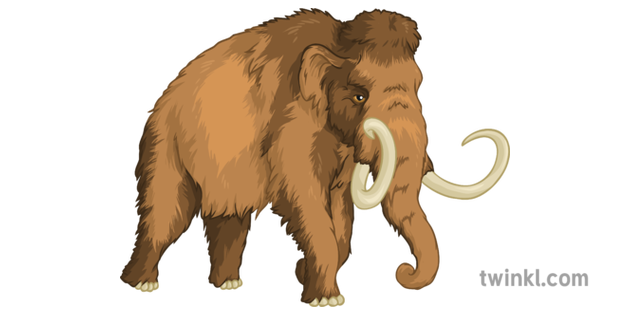
Most woolly mammoths died around 10,500 years ago, at the end of the last ice age. However, a small population of them became trapped on Wrangel Island and lived there until around 3,700 years ago.
Before they went extinct, woolly mammoths lived alongside humans, though they were often hunted for food and for their tusks.
Although they were once common in North America and Siberia, woolly mammoths were driven to extinction by a number of factors. The main reason that they went extinct was because of changes to their environment, but their numbers also dropped because of humans hunting them.
Living during the ice ages, the woolly mammoths were adapted to live in a cold, icy, and frozen habitat. However, the climate changed, and there was a warm period. The woolly mammoths couldn't adapt fast enough to the change, which lead to their eventual extinction.
The last woolly mammoths of Wrangel Island are thought to have gone extinct for another reason. They experienced bad mutations in their genes through natural selection. They lost their sense of smell, preferred to be solitary rather than in a herd, and their coats became shiny. It's thought that the animal died out because of the negative changes to their DNA.
Known as the 'mammoth steppe' or 'tundra steppe', the woolly mammoth's habitat crossed northern Asia, Europe, and north parts of North America during the last ice age. The steppe is a dry plain that's semi-arid, meaning it doesn't receive much water each year. It's a very cold and dry climate — it could get as low as -50°C!
Living in these cold areas, woolly mammoths took advantage of the climate and would eat the plants which were killed off in the frost.

Since the woolly mammoth's habitat was so cold, it's no wonder that they evolved a range of physical adaptations to help them survive in the climate. Here are some of the ways that they adapted to survive in the cold steppe:
As their name suggests, woolly mammoths were covered in thick and woolly fur. This insulated their bodies and protected them from the fierce cold.
Fur wouldn't be enough to keep the woolly mammoth's completely insulated from the cold. They also had four inches of fat beneath their skin, which acted like blubber.
Mammoths are famous for their huge tusks, but they were also useful for the animal. They used their tusks to dig out plants from beneath the snow to eat as part of their herbivorous diet.
The woolly mammoth's ears are much smaller than their modern day counterpart's, and their tails are shorter too. This is because it helped to reduce heat loss and lowered the risk of frost bite. They needed to be able to stay warm in the cold ice age!
Humans often hunted woolly mammoths, both for food and for the tools that they could make from their bones. The woolly mammoth was a huge animal, so hunting down just one would secure a number of meals for a group of humans.
However, it would've been very difficult for a human to bring down a woolly mammoth — it would've taken not just weapons but also tactics and cooperation within the group. There isn't much direct evidence of mammoth hunting, so researchers aren't quite sure how often it happened. It's believed that Neanderthals may have hunted more large animals, such as the woolly mammoth, than Homo Sapiens.
Woolly mammoth bones were often used for building things. For example, there were human groups in central and eastern Europe who used the animal's big bones to build themselves huts to live in. A Mezinian culture, found in present-day Ukraine, used mammoth jaws, long bones and even painted bones arranged in pattern to form the outer walls of their homes. A Neanderthal mammoth bone structure has also been found in Ukraine.
Mammoth ivory was also used to carve a wide range of items. Long mammoth tusks and ribs were used to create sharp tools, but other objects were also made. A mammoth ivory flute was found in southwestern Germany, suggesting that early humans didn't just use bones for tools and weapons.
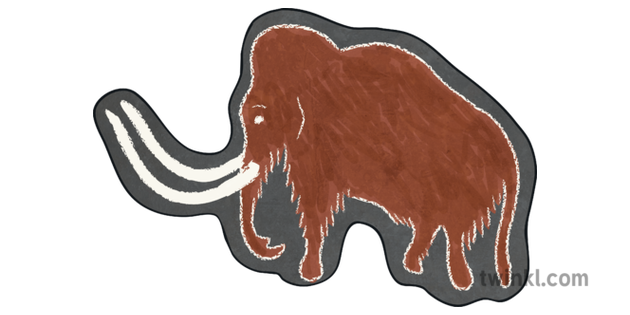
A well-preserved mammoth with soft tissue and hair was found in Siberian permafrost, which has made the world speculate about whether the creatures could be resurrected using this DNA. Researchers say that they might be able to fill the gaps in the animal's DNA with elephant DNA.
Despite this, many are against it. The world has changed dramatically since woolly mammoths roamed the Earth, and we're no longer in an ice age. How would the woolly mammoth react to such a changed world? Some also fear that the animals would become a spectacle and wouldn't be given the life that they deserve.
Woolly mammoths did not live at the same time as dinosaurs. Woolly mammoths lived from the Pliocene epoch (around 5 million years ago) into the Holocene epoch, which was around 4,000 years ago. Dinosaurs, on the other hand, lived in the Mesozoic era, between 246 and 66 million years ago!
Teaching children about extinct animals? The woolly mammoth is a wonderful animal to focus on, and we've got plenty of learning resources that you can use to support your teaching and save you time.
This fact file is a brilliant way to introduce children to the woolly mammoth. They can practise their independent reading skills, or you could even read it together as a class. It includes lots of facts about the animal, as well as an illustration.
This PowerPoint is perfect for whole-class teaching. It's full of information about a range of prehistoric beasts, including the woolly mammoth. It includes illustrations of each creature to help capture children's attention and imagination too.
If you're introducing children to the concept of extinction, then this PowerPoint is a great place to start. It covers a range of animals which are at risk of extinction, as well as animals which are already extinct.
 Home
Home  Membership
Membership  Customer Support
Customer Support  Create
Create  Blog
Blog 

